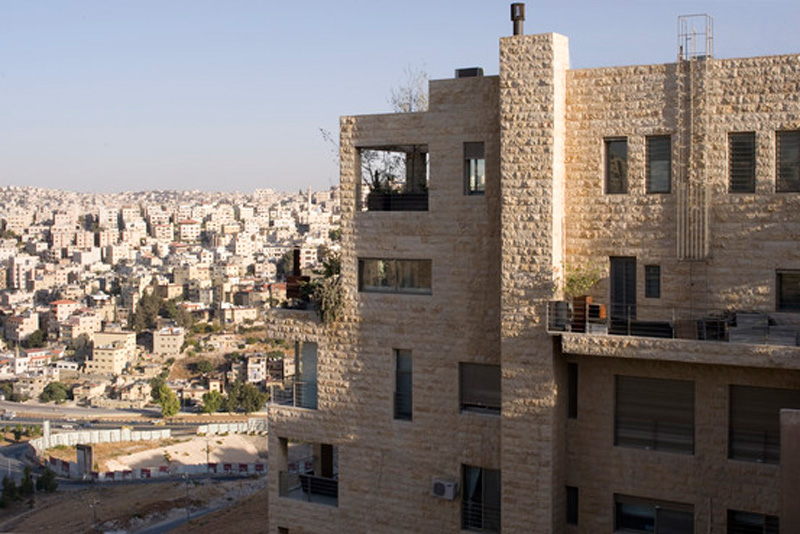Jordanian Architect Turns a Challenge Into a Trend
The understated earth-tone house of Jordanian architect and painter Ammar Khammash has its back to the wealthy hills of west Amman and faces the poor quarters of the east—favoring sweeping cliff-side views over a luxury-neighborhood lookout.

“For me, the location is most important,” says Mr. Khammash, who designed his dream home on a cliff overlooking the capital city of Amman. “I wanted a place where there was no other construction, where I could have a view. That’s why I wanted a cliff—even though it was difficult.”
The 53-year-old Amman native says he bought the property in 2000 for $145,000—half the price of the land across the street because of the cliff. But for Mr. Khammash the setting provided a challenge that would be rewarded with a breathtaking vista.
Using concrete reinforcements and retaining walls, he and a partner built a seven-story apartment building into the jagged hill at a cost of $1.2 million. Mr. Khammash took the top two floors to create a 3,874-square-foot, one-bedroom, three-bathroom home with a terrace. His partner took the next floor; the remaining five units (the ground floor has two apartments) were sold between them.
Since then, developers have taken notice of the location, and Mr. Khammash now has neighbors on either side and more coming in the neighborhood—a bittersweet result of his project. Several residents in the area are diplomats from foreign embassies.
Mr. Khammash is known in Jordan for his cultural and environmental preservation work, in which he uses local and natural materials. One recent project, the Feynan Ecolodge hotel in Jordan’s Dana Biosphere Reserve, has won four international awards for sustainable development since it opened in 2005. The hotel uses solar power, and passive cooling and heating, and is off the electricity grid. Stone shelves offer protection from and absorb heat, as does the layered dome ceiling. The candles used at night are made by the local Bedouin community to create jobs.
In the 1990s, Mr. Khammash worked in the Jordanian town of Madaba on the restoration of churches and designed a shelter for Byzantine mosaics. The decade before, he built two tourist retreats by the ruins of the Roman city of Pella in northwest Jordan, using indigenous stones and old craftsman techniques.
Mr. Khammash says his design and building sense was influenced in part by his father, a structural engineer whose work exposed him at an early age to different types of stones and landscapes.
Mr. Khammash has a second home in Pella, a retreat he designed in a traditional Ottoman style to complement the surrounding landscape and old structures.
“No site is empty,” he says. “The wind and the sun and the flora and the fauna belong there, and we have to take the permission of the elements to change the site. Otherwise we’re forcing the site to be what we want it to be. A good building befriends the site.”
Mr. Khammash is also an artist, and his watercolor paintings have been shown in Europe, the U.S. and Asia. These days, his paintings take up more of his time than his architecture.
Source: Wall Street Journal